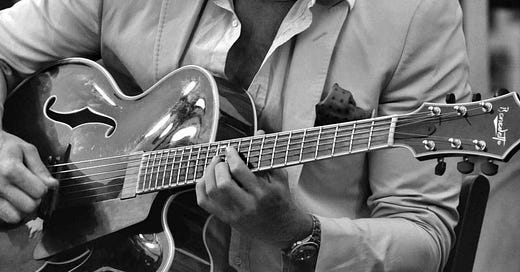Why I teach beginner jazz to my intermediate guitar students.
If you can play jazz, you can play all the other styles of guitar better.
Keep reading with a 7-day free trial
Subscribe to SoundHole Guitar Lessons to keep reading this post and get 7 days of free access to the full post archives.





